Naorid Bank
Banking App - Biometric Authentication for Trust and Ease
In a pivotal academic endeavour as a part of my coursework at Fanshawe College, I led the design of a banking app focused on improving Security and Trust. The project integrated advanced biometric two-factor authentication (2FA) to enhance user protection while maintaining a seamless experience.
Key highlights included:
🔒 Mandatory biometric login to safeguard user accounts.
📊 Secure biometric verification for accessing financial details.
💸 Dual-layer authentication for approvals of in-app and online transactions.
Traditional banking apps rely heavily on passwords and OTPs, which are prone to phishing attacks and unauthorized access. Users expressed concerns over the complexity of managing secure access without compromising convenience. The challenge was clear: Creating a banking experience that feels secure and builds trust
Visual Designer, UX Designer, UX researcher
We employed user interviews and surveys to gather qualitative and quantitative insights into users’ concerns and expectations regarding digital banking security. These methods allowed us to empathize with user pain points and validate the need for advanced authentication measures. Affinity mapping was used to gather all the insights from user interviews and surveys.
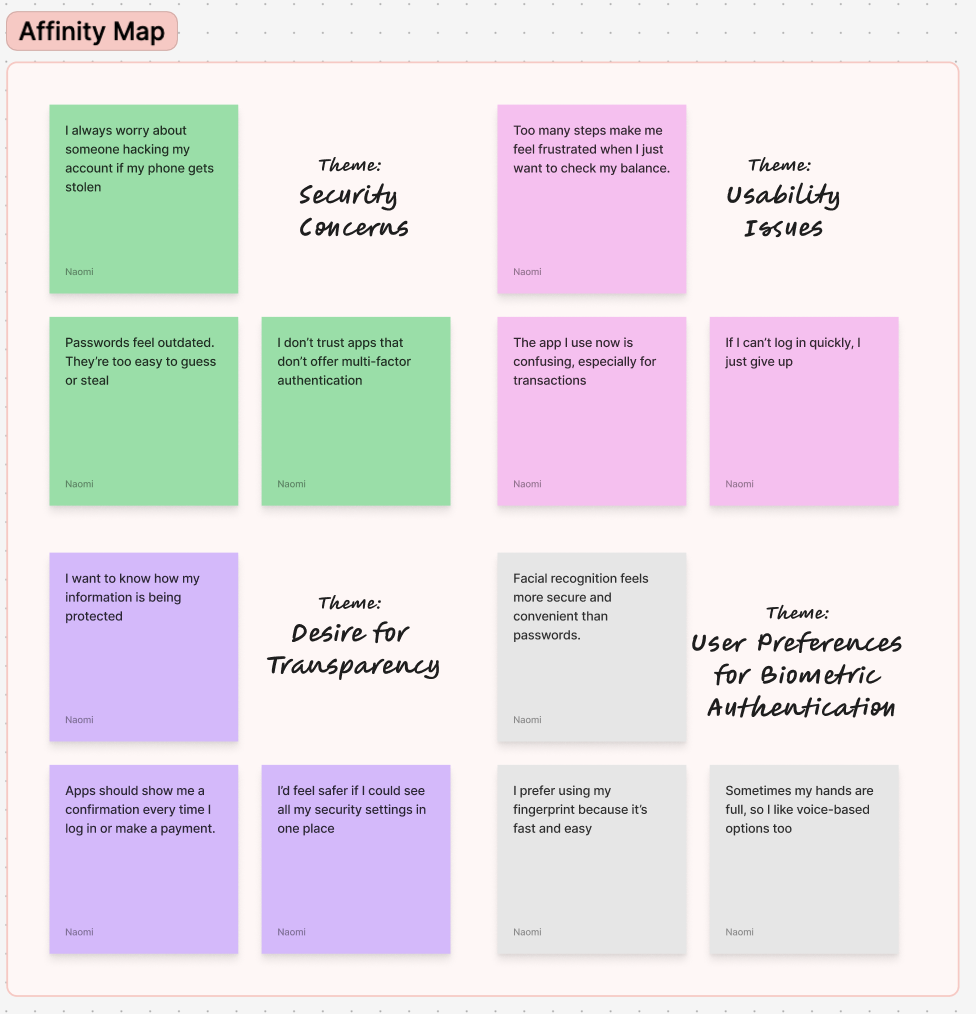
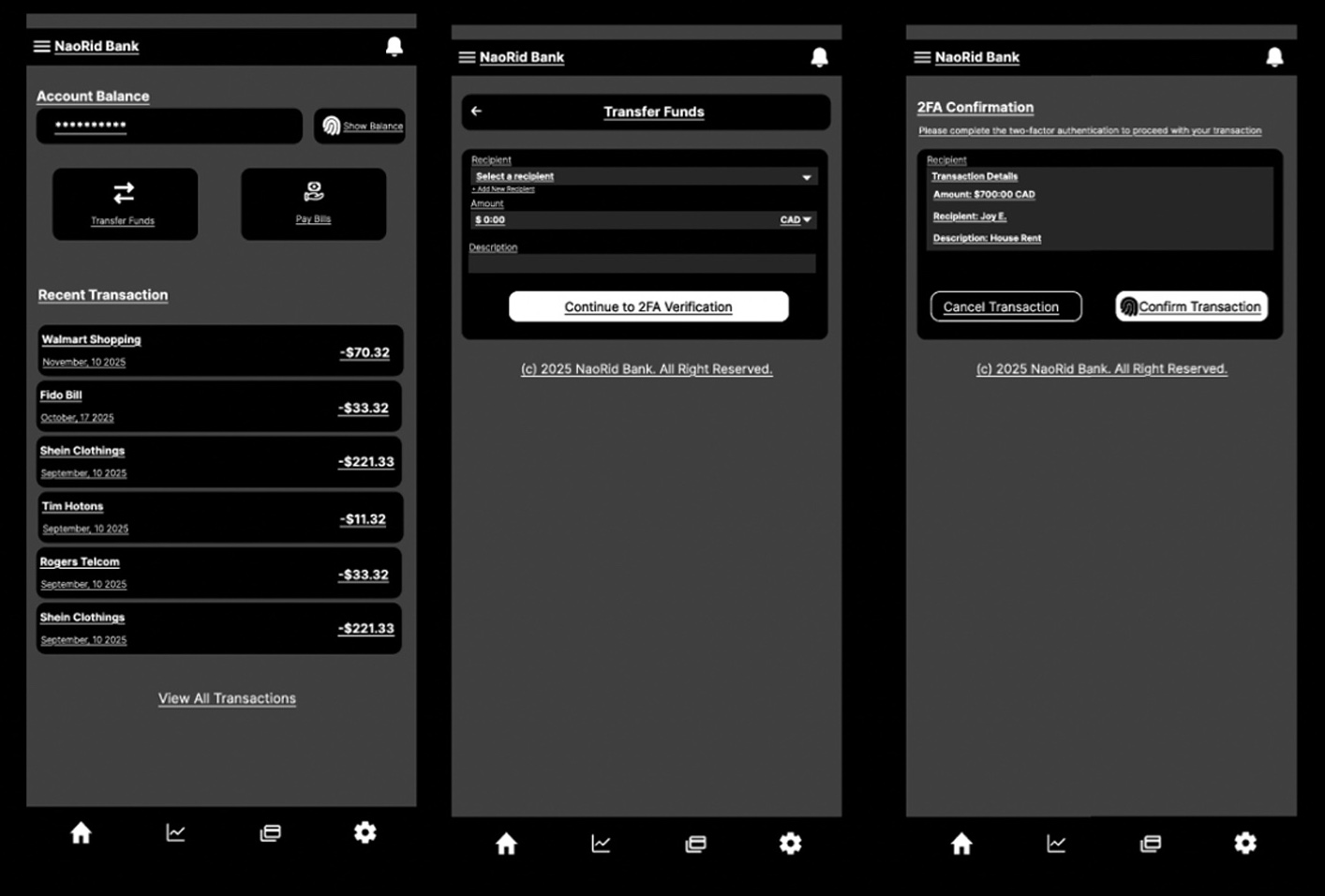
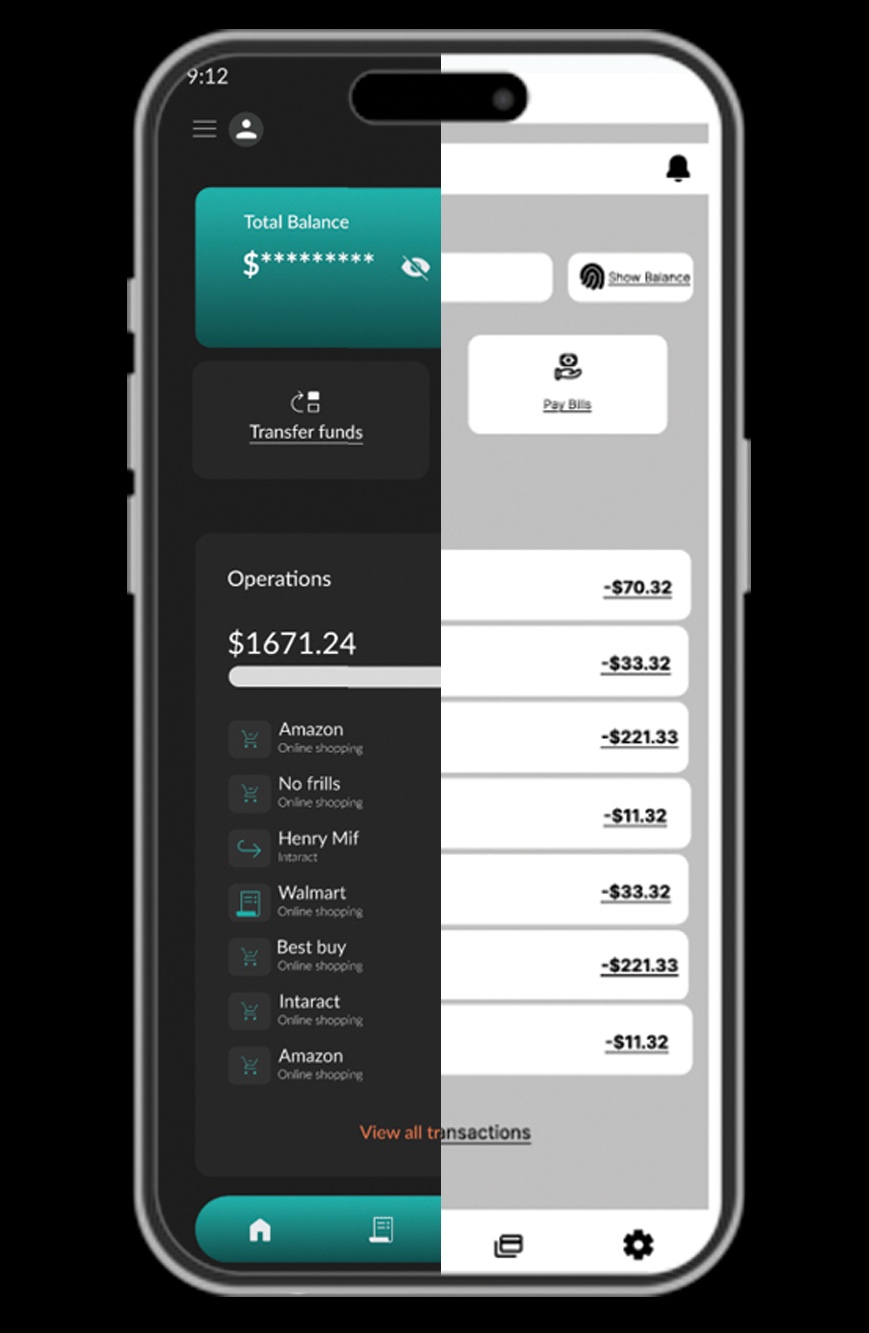
This was used to further refine insights and identify actionable opportunities allowing us to focus on opportunities that maximized security and user confidence.
Using the solutions tree, it helped us discover;
Opportunity: Enhance User Trust Through Proactive Security Measures
From the Solutions Tree framework, we identified an opportunity to reinforce trust by integrating biometric authentication at login and across all critical interactions, such as transaction confirmations and sensitive account views.
Experiment: Prototype Biometric Multi-Layer Security Flow
We developed and tested a prototype featuring mandatory facial recognition for login, transaction approvals, and account overview access. Usability testing was conducted using tools like Maze to evaluate user reactions and measure task completion rates. The insights helped refine the experience to ensure security enhancements without usability trade-offs.
Balancing Security and Usability:
- Challenge: Ensuring robust security measures (e.g., mandatory biometric scans) without creating excessive friction for users.
- Approach: Iteratively tested and refined the user journey to maintain convenience while incorporating multiple authentication layers.
User Adoption Concerns:
- Challenge: Designing features that users would trust and feel comfortable using, especially those unfamiliar with biometric technology.
- Approach: Conducted user interviews to understand their hesitations and addressed them through transparent feedback mechanisms and clear onboarding flows.
Complex User Flows:
- Challenge: Incorporating multiple biometric authentication points without overwhelming or confusing users.
- Approach: Applied the Solutions Tree framework to identify critical interaction points and optimized these for simplicity and clarity.
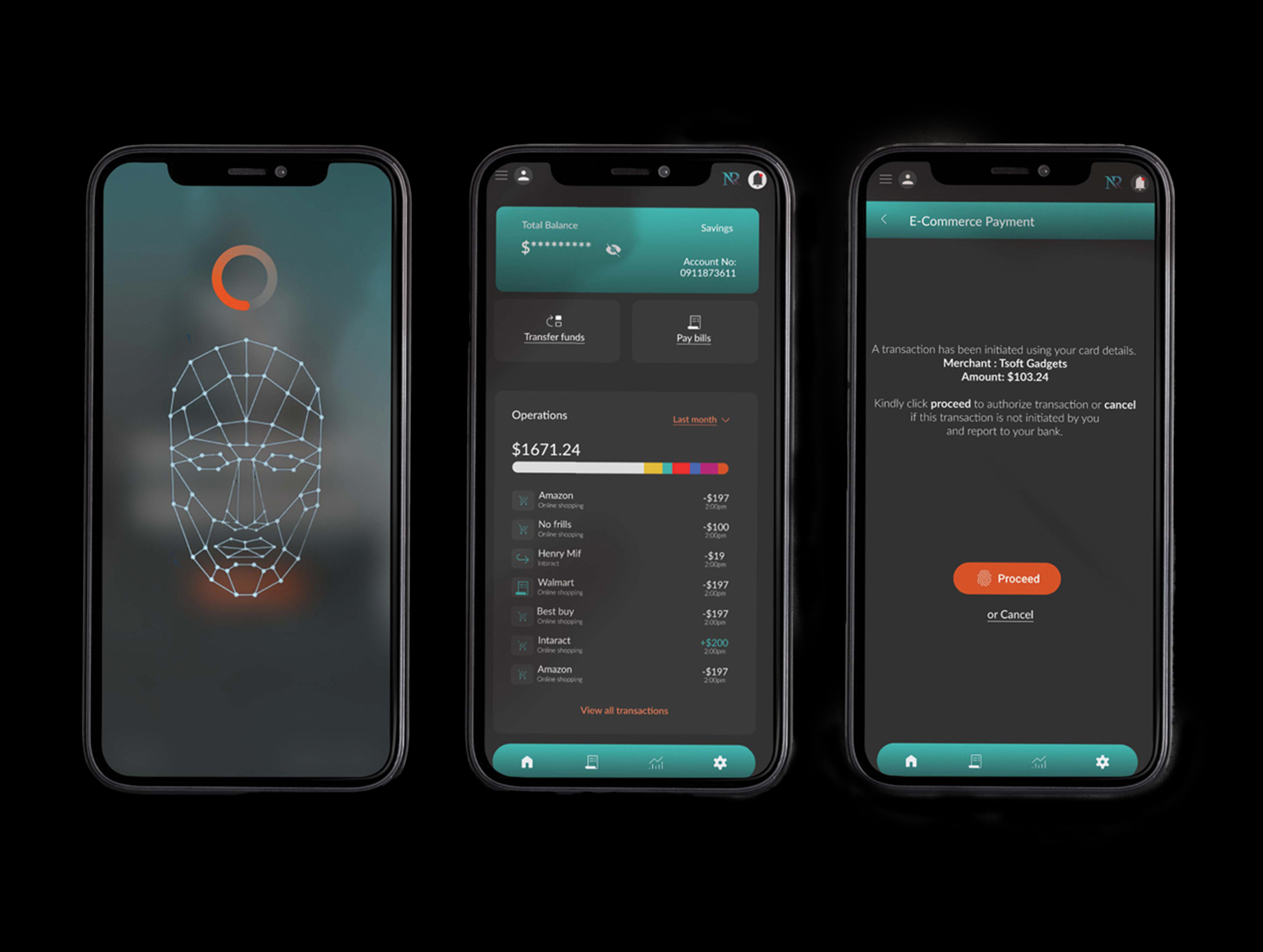
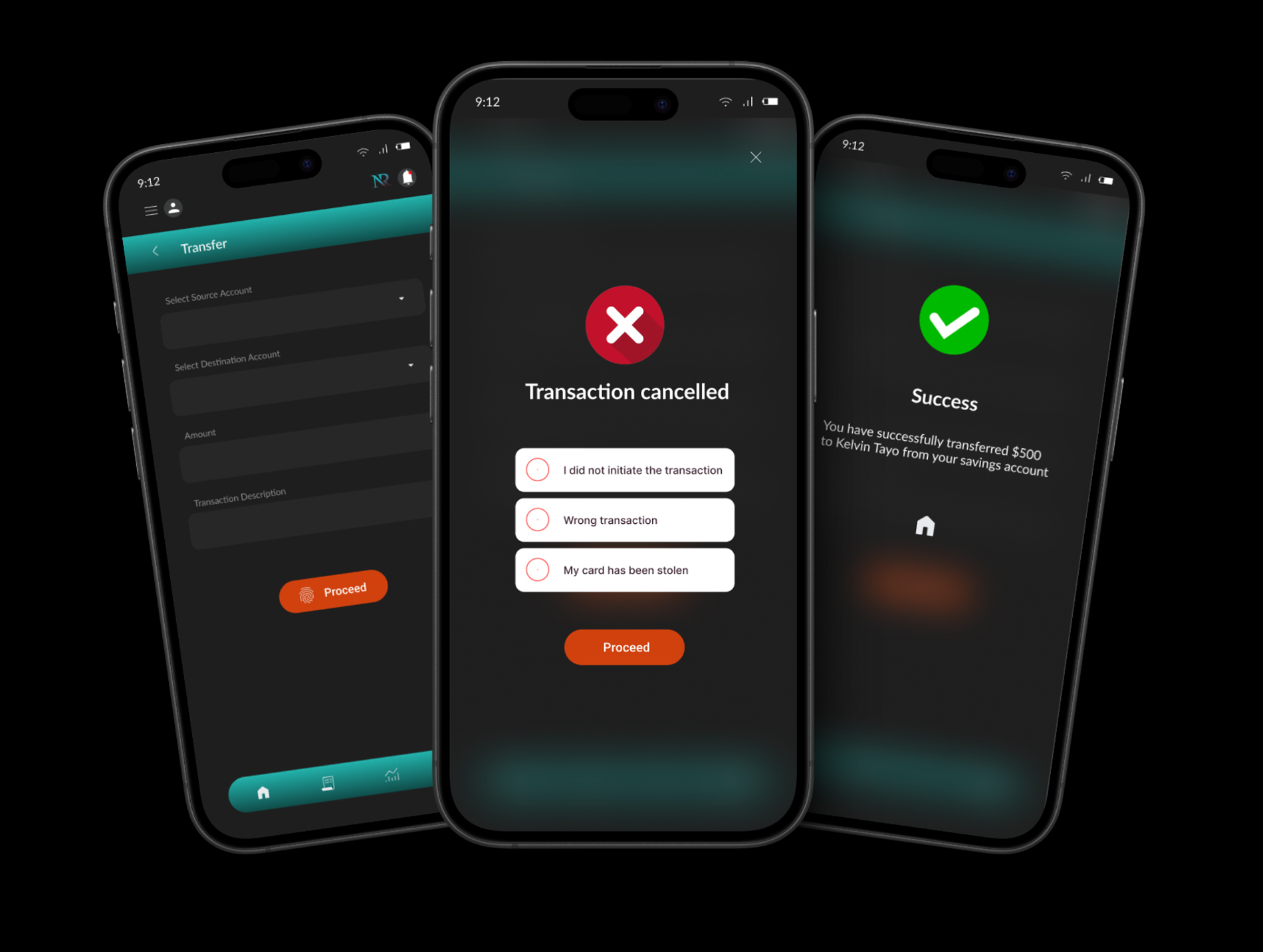
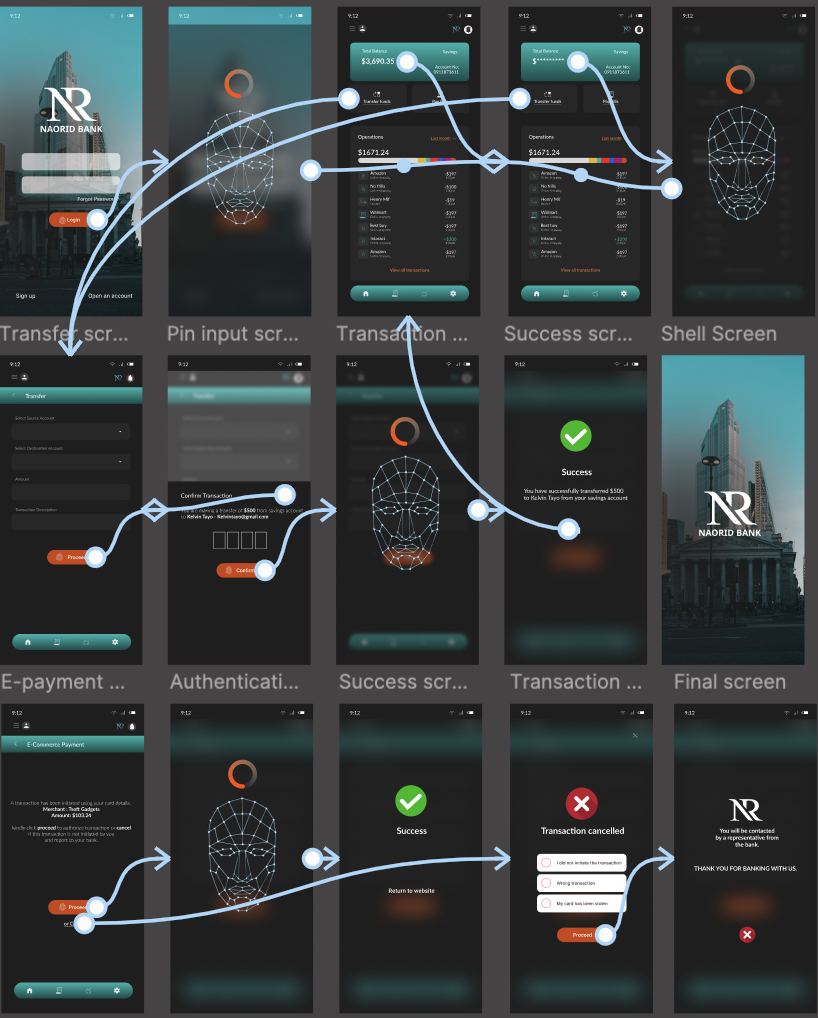
The Naorid Bank app integrates biometric 2FA as a core feature, safeguarding sensitive operations through:
Biometric Login: Facial recognition is mandatory for account access, even after entering valid credentials.
Secure Account Overview: Users cannot view balances or transaction history without an additional biometric scan.
Transaction Approvals: Dual-layer verification—password entry followed by biometric confirmation—ensures secure fund transfers.
E-Commerce Payments: Redirecting users to the app for biometric verification before completing online purchases.
Issue Reporting Safeguards: Requiring biometric confirmation for flagged issues, preventing fraudulent claims.
The Naorid Bank app redefines digital banking security by seamlessly integrating biometric authentication without sacrificing usability. This project demonstrated the power of user-centered design in addressing security concerns while maintaining a frictionless experience. Through research-driven insights, iterative prototyping, and usability testing, we successfully balanced robust protection with user confidence. The result is a banking app that not only safeguards financial transactions but also enhances trust and accessibility. This experience reinforced the vital role of UX in financial technology, proving that security and ease of use can coexist harmoniously in digital banking.